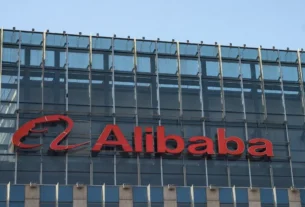The digital landscape is evolving at an unprecedented pace, and 2025 is poised to be a transformative year for software development and usage. From Artificial Intelligence and blockchain technologies to no-code platforms and industry-specific SaaS solutions, the software ecosystem is becoming more intelligent, integrated, and intuitive. This article explores the top trending software for 2025, revealing how businesses, professionals, and everyday users can leverage these tools for growth, productivity, and innovation.
- AI-Powered Productivity Suites
Artificial Intelligence has penetrated nearly every corner of the software industry, and 2025 is the year AI-powered productivity suites dominate the market. These tools are no longer just about spell-checking or task management—they’re becoming intelligent assistants that understand context, automate workflows, and even generate content.
Popular Software:
- Microsoft 365 Copilot – Integrates ChatGPT-like features into Word, Excel, and Outlook, offering predictive text, summarization, and task automation.
- Notion AI – Transforms the popular note-taking app into an intelligent workspace that can write, summarize, and brainstorm with users.
- GrammarlyGO – Goes beyond grammar, providing rephrasing, tone adjustment, and full-text generation.
Key Features:
- Context-aware writing assistance
- Smart scheduling and meeting summaries
- Automated email responses
- AI-based data analysis in spreadsheets
- Autonomous Software Development Tools
The demand for faster and smarter application development has given rise to AI-assisted coding environments. These tools help developers write code, debug applications, and even deploy software using conversational or visual interfaces.
Leading Platforms:
- GitHub Copilot X – Powered by OpenAI, it suggests complete code snippets and even writes unit tests.
- Amazon CodeWhisperer – Provides code suggestions tailored to AWS infrastructure.
- Replit Ghostwriter – Especially popular for real-time collaborative coding and prototyping.
Benefits:
- Boosts developer productivity
- Reduces syntax and logical errors
- Automates documentation and testing
- Enhances collaborative development environments
- No-Code and Low-Code Platforms
In 2025, non-developers are building enterprise-grade applications using intuitive drag-and-drop interfaces. No-code/low-code platforms are democratizing software development, empowering small businesses, startups, and internal teams to build solutions without heavy technical knowledge.
Trending Solutions:
- Airtable – Combines the simplicity of spreadsheets with the power of databases.
- Bubble – Allows full web app development without writing code.
- OutSystems – Tailored for large enterprises needing scalable low-code apps.
Use Cases:
- Internal dashboards
- CRM systems
- Inventory management
- Customer portals
- Industry-Specific SaaS Solutions
As competition intensifies, industries are turning to tailored SaaS (Software as a Service) applications that solve niche problems. In 2025, software is no longer one-size-fits-all; it’s customized for each vertical, from healthcare to education to real estate.
Examples by Industry:
- Healthcare: DrChrono, Kareo, and Athenahealth for electronic health records and telehealth.
- Education: Canvas, Moodle, and ClassDojo for digital learning management.
- Real Estate: PropStream, DealMachine, and Follow Up Boss for lead generation and deal tracking.
Features:
- Compliance with industry regulations
- Integrated data analytics
- Role-based access and security
- Real-time collaboration tools
- Cybersecurity and Privacy Software
With rising concerns over data privacy and an increase in cyber threats, 2025 is witnessing a surge in advanced cybersecurity software powered by AI, behavioral analytics, and zero-trust architectures.
Popular Tools:
- CrowdStrike Falcon – Endpoint protection that uses AI to detect threats.
- SentinelOne – Autonomous threat detection and response platform.
- 1Password Teams – Secures credentials and protects against phishing attacks.
Emerging Trends:
- Behavioral biometrics
- AI-based threat detection
- Decentralized identity management (DID)
- Post-quantum cryptography solutions
- Digital Experience Platforms (DXPs)
Customer experience is king, and Digital Experience Platforms are helping brands deliver seamless, personalized, and engaging user experiences across all digital channels.
Market Leaders:
- Adobe Experience Manager (AEM) – Integrates content management with AI-driven personalization.
- Sitecore – Enables omnichannel content delivery and customer insights.
- HubSpot CMS Hub – A flexible solution for marketing teams and content managers.
Key Capabilities:
- Personalization based on customer behavior
- Integrated eCommerce and content tools
- AI-powered customer journey mapping
- Blockchain and Web3 Applications
The blockchain boom continues in 2025 with an increased focus on real-world applications, including decentralized finance (DeFi), digital identity, and supply chain transparency.
Noteworthy Platforms:
- Polygon – Scalable Ethereum-based blockchain used for gaming and DeFi.
- Chainlink – Connects smart contracts to real-world data via decentralized oracles.
- Metamask & Brave Browser – Gateways to Web3 browsing and decentralized apps (dApps).
Areas of Impact:
- Transparent supply chains
- Tokenized real estate
- Decentralized voting systems
- NFT-based digital ownership
- Virtual Collaboration and Metaverse Platforms
Remote work is evolving into immersive digital collaboration, with platforms leveraging AR/VR and metaverse environments to simulate real-world workspaces and enhance team interaction.
Top Platforms:
- Microsoft Mesh – A mixed-reality platform for 3D collaboration in Teams.
- Meta Horizon Workrooms – VR meeting rooms that replicate physical offices.
- Spatial – Combines augmented reality with design collaboration.
Key Use Cases:
- Virtual team meetings
- Training simulations
- Remote product design
- Virtual trade shows and expos
- Environmental, Social, and Governance (ESG) Software
As sustainability becomes a top priority, ESG software is trending in 2025, helping companies track and improve their environmental and social impact.
ESG Tools to Watch:
- Sphera – Offers software for ESG reporting, risk management, and compliance.
- Persefoni – Carbon accounting platform used by global enterprises.
- Plan A – Automates sustainability data collection and impact analysis.
Features:
- Automated carbon footprint tracking
- Real-time sustainability reporting
- Regulatory compliance tracking
- AI-driven ESG goal recommendations
- SuperApps and Unified Work Platforms
Inspired by platforms like WeChat, 2025 is seeing the rise of SuperApps—platforms that consolidate multiple functions (messaging, payments, social networking, task management) into one unified interface.
Examples:
- ClickUp – Combines project management, docs, goals, and chat in one platform.
- Zoho One – A full suite of 40+ apps for business operations under one subscription.
- Microsoft Loop – Brings real-time collaborative components into Teams and Office apps.
Advantages:
- Reduced context switching
- Centralized data
- Integrated communication and workflow tools
- Enhanced team productivity
Conclusion: Preparing for a Smarter Tomorrow
The software trends of 2025 are converging toward intelligent automation, hyper-personalization, and deep integration across systems and industries. Whether you’re an entrepreneur, a developer, a creative professional, or a corporate leader, embracing these top trending tools will be critical for staying competitive and future-ready.
As we move further into the decade, one thing is certain: software will continue to shape how we live, work, and interact—with increasing intelligence, inclusivity, and purpose.




